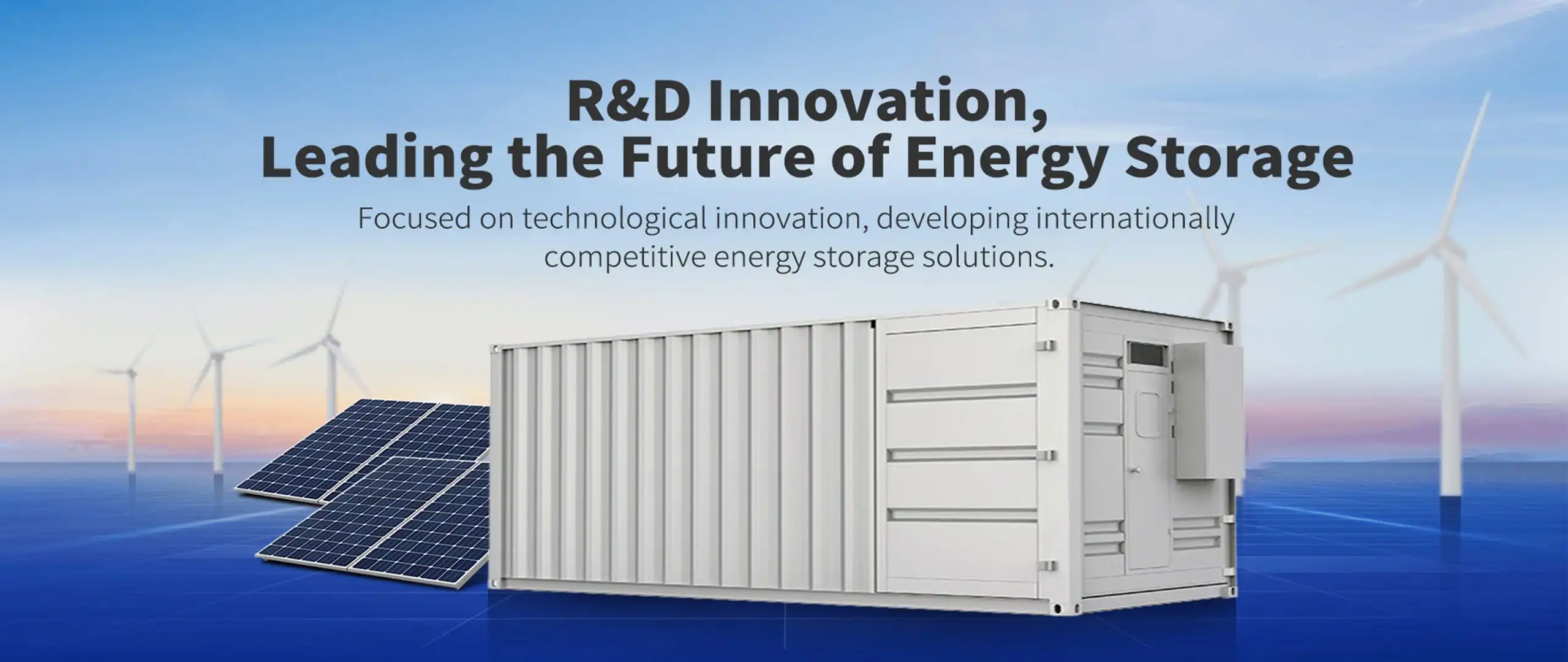What is an Energy Storage Container?
The energy storage container is a module that hosts the entire battery energy storage system within a shell of container size. It’s a turnkey energy storage power supply that can be deployed fast without constructing a dedicated battery room. The container typically integrates batteries, power electronics, thermal control, safety systems, and monitoring equipment. With such configuration, facility owners simply connect the container to the grid or renewable generation and gain stable stored power with minimum civil works.
Using such containerized solutions makes it easier to deploy, scale, relocate, or expand energy storage capacity whenever and wherever it is needed-from utility-scale solar farms to remote or industrial sites.
Why Energy Storage Containers Are Gaining Importance
As renewable energy sources like solar and wind continue to proliferate, the variability and intermittency of power generation raise the demand for reliable storage. Containerized energy storage provides a flexible and scalable means to satisfy that demand.
According to a recent technical study, utility-scale lithium-ion battery systems continue to decline in cost while advancing in performance, making battery energy storage systems more economically feasible than ever. NREL: Cost Projections for Utility-Scale Battery Storage 2023 Update shows that around-the-clock storage is getting cheaper and increasingly available.
Because of that trend, containers housing such battery storage systems emerge as a practical path to deliver energy storage without major infrastructure build-out.
How an Energy Storage Container Works
A containerized energy storage solution is a self-contained power module. The basic operational flow is:
- Electricity is fed from the grid or renewable sources into internal battery modules, storing energy chemically.
- An inverter does the work of converting DC output from the batteries into AC suitable for equipment or grid supply when power is needed.
- The BMS consistently monitors the battery status, including its voltage, current, temperature, and state of charge, to guarantee safety and performance.
- Examples include thermal management-cooling or ventilation-to maintain safe operating conditions of the batteries.
- Safety and fire-protection systems protect against overheating, electrical faults, or other hazards.
Because all key components are pre-integrated, the installation of a container often requires only site preparation and electrical connection — much simpler than the building of a stand-alone battery facility.
What’s Inside: Typical Configuration of a Containerized Storage System
Here is a simplified overview of typical internal components and their roles:
Component | Role | Typical Implementation |
Battery modules | Store electrical energy | Lithium-ion batteries; for example, LFP or NMC chemistry |
Inverter / Power electronics | DC↔AC conversion; charging/discharging | Grid-compatible output capacity |
Battery Management System (BMS) | Monitor battery health and safety | Voltage, current, temperature, state-of-charge sensing |
Thermal management (cooling/ventilation) | Maintain safe battery temperature | Air cooling, ventilation or liquid cooling depending on climate |
Safety & fire-protection system | detect and suppress hazards | sensors, fire suppression mechanisms, containment |
Control & monitoring system | operace management, logging, remote control | Data logging, remote monitoring, system interface |
This configuration makes the container function like a self-contained energy storage power supply that is easy to integrate with various energy infrastructures.
Types of Energy Storage Containers and Common Use Cases
The containerized energy storage systems are versatile and can be used for various scenarios to serve different needs:
- Grid-scale energy storage containers: Large capacity units deployed by utilities or grid operators to store energy, manage peak load, stabilize frequency, or integrate variable renewables.
- Solar-plus-storage containers:Used in conjunction with solar photovoltaic farms to store excess daytime solar generation and release it during periods of low solar output, such as in the evening or on cloudy days.
- Backup and emergency power containers: Installed at industrial sites, data centers, remote installations, or at critical infrastructure, these provide uninterrupted power in the event of an outage or unstable grid conditions.
Each variant uses the same base architecture but is configured differently for the application-specific battery capacity, inverter sizing, thermal management, and safety measures.
Benefits of Energy Storage Containers
Using containerized storage offers many advantages compared with traditional fixed battery rooms or standby generators:
- Rapid deployment:Installation of the systems requires only site preparation and connection since they are delivered pre-built and tested, hence no time-consuming civil works are required.
- Modularity and scalability:It is easy to start with one container and add more containers over time as energy storage demand grows.
- Flexibility and mobility: Containers can be relocated or repurposed if energy demands are shifted or project sites change.
- Improved economics over time:With the continued drop in the cost and rise in performance of batteries, BESS becomes more economical. NREL: Cost Projections for Utility-Scale Battery Storage 2023 Update presents a downward cost trend of utility-scale storage.
- Supporting Integration of Renewables and Grid Stability:Containerized storage can absorb excess generation from solar or wind sources and dispatch stored energy when needed, thus smoothing out supply fluctuations and making renewables more reliable.
Typical Battery Technologies Used
Most energy storage containers currently employ lithium-ion battery technology. Common chemistries include lithium-iron-phosphate and nickel-manganese-cobalt types. LFP is often preferred for stationary storage because it offers very stable thermal performance and a long cycle life, while NMC may be chosen when higher energy density is required.
According to a comprehensive review of storage technologies, lithium-ion is still the main choice for utility-scale battery energy storage systems because of its good balance in cost, performance, lifetime, and safety. Hence, among other storage technologies, the same conclusion was supported by PNNL: Energy Storage Technology and Cost Characterization Report 2019.
The type of battery chemistry determines energy density, lifetime, thermal behavior and maintenance requirements-all important considerations for containerized deployments.
Real-World Example: Utility-Scale Containerized Storage Deployment
In 2024, a utility-scale project in the United States deployed a containerized battery energy storage system that complemented a large solar farm. During midday solar peak hours, the system stored excess energy and dispatched stored power in the evening to meet peak demand. This helped smooth demand peaks, reducing reliance on peaking gas turbines and improving grid stability overall.
Another example, in 2023, was a community on a remote island where grid extension was difficult. A solar-plus-storage container system was installed: solar panels generated energy during the day, while the container stored surplus energy and supplied electricity at night. This greatly reduced dependence on diesel generators and lowered fuel costs while improving reliability.
Real-world deployments of these containerized energy storage installations show how they make the addition of flexibility and reliability in energy storage practical at various scales, from urban grids to remote or off-grid areas.
Considerations and Limitations Before Deployment
While energy storage containers have many advantages, some important considerations are:
Upfront investment: Even while containers simplify deployment, the cost of battery modules, inverters, thermal, and safety systems represents significant capital expenditure.
Battery degradation: Lithium-ion batteries degrade with time, repeated charging, and discharging. Proper thermal control, maintenance, and monitoring are required to extend the life of lithium-ion batteries.
Site requirements: These would include space, ventilation, maintenance access, fire and electrical regulations, and special permits if those apply under local ordinances.
Storage duration and application limits: Containerized lithium-ion systems are usually optimized for short- to medium-term storage (hours to one day). For long-duration storage – for example, multi-day or seasonal storage – other technologies may be better suited, such as flow batteries or pumped hydro storage.
Balance of system and operations costs: Other contributors to cost and complexity, beyond the batteries themselves, include inverters, thermal systems, installation labor, and ongoing maintenance.
The Future of Energy Storage Containers
As battery technology continues to improve, along with further cost reduction, coupled with increased deployment of renewable energy systems, energy storage containers will be increasingly deployed across the world. Featuring modularity, flexibility, scalability, and relative ease of deployment, these can easily address microgrids, renewable energy farms, remote/off-grid communities, emergency backup, and rapidly deployable infrastructure.
With further development of battery energy storage systems, containerized storage could become the backbone of decentralized energy systems, including grid stability, renewable integration, and resilient power supply options for a wide variety of users.
You can check our solar container products if you are interested in mobile solar plus storage solutions.

